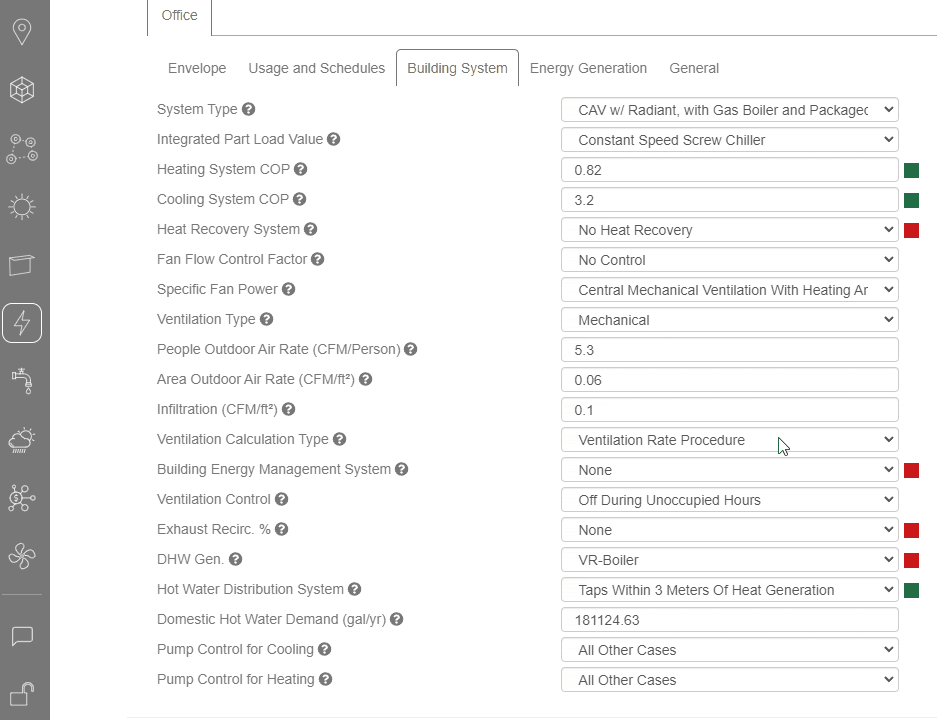Today’s innovative digital design tools allow engineers and designers to rethink their design approaches and optimize for outcomes that prioritize project goals or specific energy targets. One of cove.tool’s most popular features uses a powerful machine learning algorithm with analysis.tool to help users parametrically explore different product optimization bundles. This can be especially useful for design teams who want to take their analysis a step further and see how their design decisions fare when it comes to cost vs. energy. Considering the multitude of decisions to be made for critical elements like wall insulation, roof insulation, HVAC, and more, there are several ways teams can optimize for cost and energy. In cove.tool’s popular cost vs. energy optimization feature, users have all the data at their fingertips to explore these options, and that’s become more powerful with cove.tool’s new partnership with enVerid.
Engineers and design teams can now take optimization a step further by exploring ventilation calculation options. Because HVAC is responsible for roughly one-third of commercial building energy intensity, ventilation rate calculations and HVAC system selections are among the most impactful decisions designers and engineers make during the design process in terms of first costs, operating costs, and energy efficiency. Employing enVerid’s Sorbent Ventilation Technology™ (SVT™) with the ASHRAE 62.1 Indoor Air Quality Procedure (IAQP), can offer project teams an opportunity to improve indoor air quality (IAQ), reduce the size of their HVAC systems, and provide first and ongoing cost savings—and reduce carbon emissions.
Ventilation Calculation Types: IAQP vs. VRP
The ASHRAE Standard 62.1 defines ventilation for acceptable indoor air quality, which includes two methods approved for mechanical ventilation: Indoor Air Quality Procedure (IAQP) and Ventilation Rate Procedure (VRP).
Ventilation Rate Procedure (VRP)
VRP is a traditional, more prescriptive approach that allows recirculated, outside air to be cleaned. The main drawback with this approach is it doesn’t take into account temperature differences from the outside air, which means quite a bit of energy is wasted in hot or cold regions because of the energy expended to make the outside air a more comfortable temperature for building occupants. This method also assumes that the outdoor air is cleaner, but doesn’t account for outdoor air contaminants and pollutants caused by outdoor air quality events like ozone alert days and wildfires.
Indoor Air Quality Procedure (IAQP)
IAQP is a performance-based approach for ventilation design, meaning its system design parameters are based on an analysis of contaminant sources, contaminant concentration limits, and level of perceived indoor air acceptability. The IAQP requires the building and its ventilation system to be designed to achieve both objective and subjective criteria. Outside air ventilation can be reduced below rates that would have been required by the VRP, to reduce the overall energy usage intensity (EUI) of the project while maintaining good indoor air quality that can be reliably demonstrated.

enVerid Integration
With the enVerid integration, the complex calculations that go into validating IAQP are now built-in as a selection when exploring ventilation types in product optimization bundles and the baseline energy section. The enVerid integration calculation not only performs outdoor air rate reduction, it also auto-sizes the right enVerid system. For project teams looking for innovative ways to reduce EUI and/or earn LEED points without increasing project cost, enVerid’s unique approach of IAQP with SVT offers a compelling solution, which has been recognized for its ability to improve IAQ while reducing ventilation energy consumption and HVAC system first costs. enVerid’s SVT is designed to capture ozone and a wide range of volatile organic compounds (VOCs) found in buildings, including formaldehyde. It provides an efficient solution that can help owners save up to 40% in annual HVAC energy consumption and lower a building’s energy use intensity and carbon emissions.
